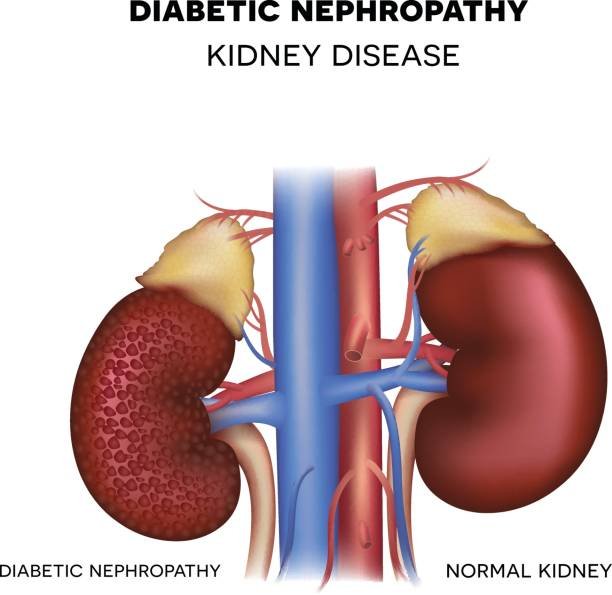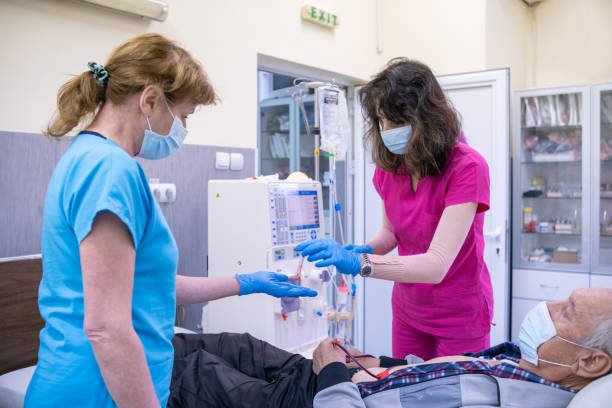
The Probability of Piabetic Nephropathy is as High as 80%? Is Kidney Dialysis Necessary in the End Stage of Diabetes? Symptoms At Once
Many dialysis patients have diabetes. When there is high blood sugar in the body, the organs throughout the body are like being soaked in sugar water, making the kidneys’ filtration burden heavier and heavier. Many diabetic patients are quite afraid of the arrival of kidney dialysis.
How can diabetics avoid the fate of kidney dialysis? Can the condition of kidney disease be reversed or controlled? Don’t worry, this article explains it to you.
Diabetic nephropathy: the probability is as high as 80%
According to statistics, the risk of kidney disease caused by diabetes is 20 times that of the average person; the risk of blindness is 4 times; the risk of cardiovascular disease is 2 times; and the risk of stroke is 5 times. Without active treatment, it is estimated that there is an 80% chance of developing kidney disease within about 10 to 15 years. Therefore, diabetic patients need to pay close attention to changes in blood sugar, blood pressure, and blood lipids. If there are any abnormalities, they must further consult a doctor.

Causes of diabetic nephropathy: Why does nephropathy occur?
Diabetic nephropathy is one of the most common complications, mainly related to the control of blood sugar, blood pressure, microalbuminuria, and whether it is combined with other cardiovascular diseases or genetics.
Nephropathy caused by diabetes may occur in both type 1 diabetes and type 2 diabetes, but the chances are slightly different. The incidence of type 1 diabetes is about 35%, slightly more men than women; the incidence of type 2 diabetes is about 30~50%.
Signs of diabetic nephropathy
Diabetic nephropathy does not have any obvious signs at first. The most common abnormality is microalbuminuria, which is the phenomenon that trace amounts of protein in the urine begin to increase. Because high blood sugar in the body will affect the increase in the filtration rate of the renal glomeruli, causing the renal glomeruli to continue to hypertrophy and proliferate, causing the renal glomeruli to begin to develop lesions, allowing some protein in the blood to flow into the urine.
Stages and symptoms of diabetic nephropathy
The course of diabetic nephropathy can be divided into 5 stages:
- Stage 1:
The glomerular filtration rate increases. The kidney function at this stage is still normal and there are no obvious symptoms. - Stage 2:
Also known as the resting stage, the filtration rate of the renal glomeruli at this time is not as fast as in the first stage, but the renal glomeruli have begun to show lesions, but albumin will not appear in the urine during this period. - Stage 3:
The filtration rate of the renal glomerulus is still normal, but the renal glomerulus continues to be damaged. Trace amounts of albumin begin to appear in the urine, and the urinary albumin excretion is between 20-200mg/min. - Stage 4:
Urinary protein will increase significantly at this time, and albumin loss in urine has exceeded 200 mg/min. At this time, some patients will develop high blood pressure, and the kidneys will gradually lose their ability to filter old waste materials, causing an increase in urea nitrogen and creatinine in the blood. - Stage 5:
Entering the end stage of renal disease, that is, the stage of renal failure, the glomerular filtration rate is lower than 10ml/min. At this time, kidney dialysis is required, and symptoms of anemia, edema, hematuria, and fatigue may also occur.
Do you need kidney dialysis if you have diabetes for a long time? The chance of diabetic nephropathy reaches 80%. See the complete stage and symptoms.

Can diabetic nephropathy be prevented?
In addition to regular blood drawing and screening, the most important thing is to always pay attention to changes in blood sugar and blood pressure. Let this article teach you how to prevent kidney disease:
- Control blood sugar:
Once diagnosed with diabetes, blood sugar should be controlled immediately to reduce the burden of renal glomerular filtration, so as to effectively prevent kidney disease. - Control blood pressure:
Maintain blood pressure below 130/80mmHg, which can reduce urinary protein and delay the deterioration of kidney function. - Control cholesterol:
Controlling cholesterol not only reduces cardiovascular disease, but also - Maintain a standard weight:
Maintaining regular exercise and maintaining a standard weight can control blood sugar and reduce the chance of kidney disease. - Eat a balanced diet:
Reduce salt intake. A high-salt diet will increase the burden on the kidneys and easily accelerate the deterioration of kidney function.
Diabetic nephropathy usually worsens rapidly and cannot be cured. Therefore, regular examinations, blood draws, and constant attention to changes in blood sugar and blood pressure can prevent the occurrence of nephropathy as early as possible.












